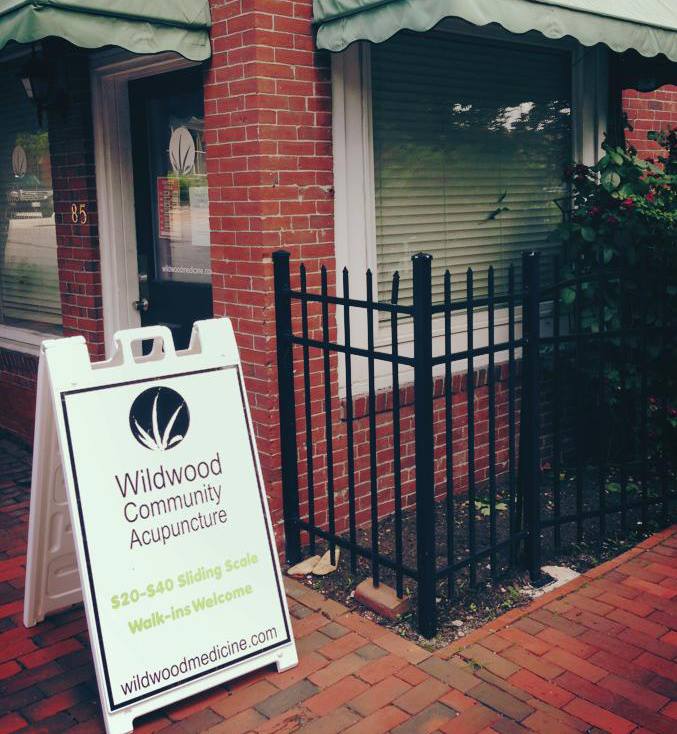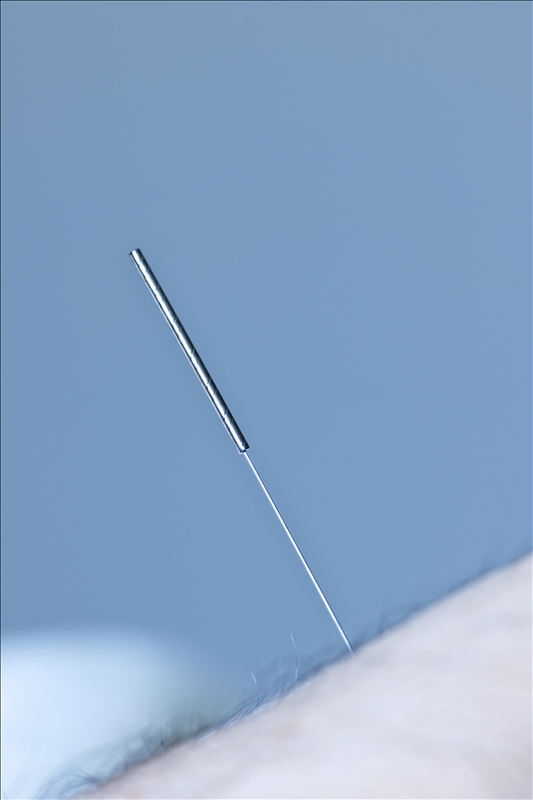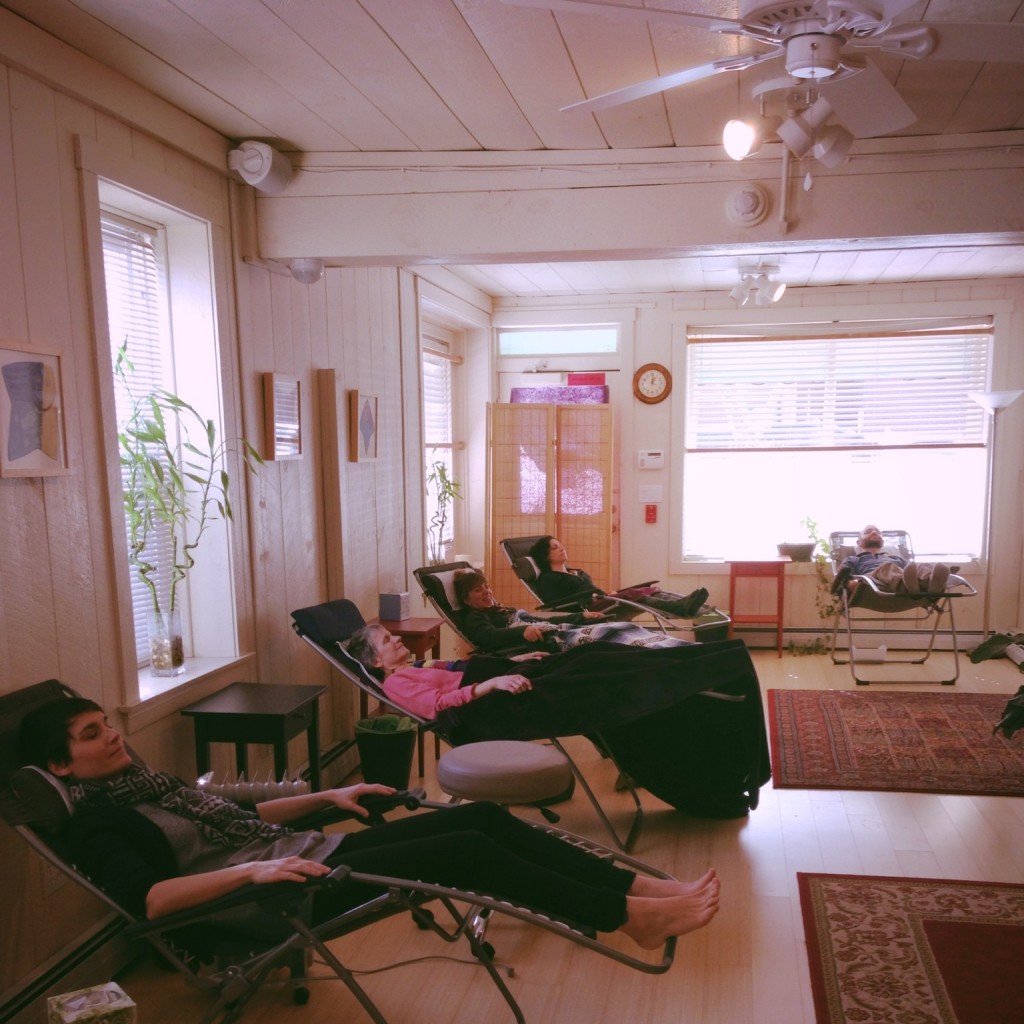Guest post by Lauren Breau, L.Ac., acupuncturist at Wildwood Community Acupuncture
Before I tell you all about community acupuncture and convince you that you should come in and give it a whirl, I have a couple of quick questions for you.
How many times have you struggled with a health issue that needed treatment, but put it off because you couldn’t afford the cost of care?
How many times have you heard this story from other people?
In general, if I ask these questions aloud, people start talking — and it’s hard to get them to stop. Their stories are charged with passion and outrage. In fact, they have so many stories of needless suffering that it can be hard not to adopt a fatalistic view of healthcare in America. Most people understand the simple fact that our health is essential to being able to experience joy and fulfillment in spite of this crazy, unpredictable world. Yet every day, thousands of people go uncared for because our healthcare system is broken.
Actually, let me rephrase that — our healthcare system is broken for most of us.
The community acupuncture model
There are some people out there with fantastic health insurance. And a few of us have enough disposable income to venture outside the “conventional medicine box” to regularly explore other modalities of healing, such as, acupuncture, massage, reiki, herbs, etc. The combination of conventional medicine and complementary alternative medicine can be incredibly powerful, but since so many don’t have access to care for even basic health needs, exploring other ways to heal their body and mind is out of the question.
I am an acupuncturist at Wildwood Community Acupuncture in Portland. Every week, around 100 people come through our doors for an affordable acupuncture treatment in a quiet, safe, community setting. A community setting simply means that six reclining chairs are set up in a semi-circle in a quiet, spacious room. Because an acupuncture treatment includes a ‘resting period’ in which the patient meditates/relaxes after the acupuncture points are placed, the acupuncturist can see anywhere from two to six people an hour.
At Wildwood, we provide acupuncture treatments on a sliding scale of $20 – $40 dollars. Treatments are anywhere from 45 to 60 minutes long. Proof of income is not required; in fact, payment is based on the patient’s financial comfort level. He/she chooses what to pay and leaves any money-shame at the door. When patients in critical financial situations cannot afford our sliding scale, we find a way to make it work for them too. Our model is non-exclusionary, which means that our service is available to everyone, regardless of income.
Sounds strange, doesn’t it? People don’t understand it at first. They can’t wrap their heads around a clinic whose model isn’t designed solely around profit. But once they come in for a treatment a couple of times, they get it. And they tell their friends about it. The magic of a non-exclusionary healthcare model means that it facilitates an ever-growing community, as well as a culture that is accepting of difference.
It’s funny, sometimes — American culture — how we expect most of our healthcare experiences to be sterile, secretive, and expensive. Though I do have a healthy respect for sterility (I AM an acupuncturist), my version of healthcare is more concerned with warmth, support, affordability, and accessibility.
At the very least, an acupuncture session is a moment to break away from the incessant stress of life and lower the volume of the chatter in your head. Once you’re in the chair, the other people in the room slowly fade away. Eventually, the room itself fades away. The body and spirit finally get the chance to commune, rearrange into a more comfortable place, and rest.
In other words, your body begins healing itself. After their first treatment, patients often look at me, slightly confused, and say “I feel … really great!??” And I say, “I’m glad to hear that!” It’s a simple exchange, and one that makes me smile instead of grimace when I get up in the morning and head to work.
Community acupuncture clinics in Maine
History of community acupuncture model in the US
Courtesy of the People’s Organization of Community Acupuncture (POCA)
The community acupuncture (CA) business model is the brainchild of Lisa Rohleder, L.Ac, and Skip Van Meter, L.Ac. of Working Class Acupuncture, in Portland, OR, and is based on traditional community styles of treatment often practiced in Asia. Faced with wanting to treat many members of their community who could not afford the standard acupuncture prices, and wanting to earn a reasonable, sustainable living as practitioners, they devised a sustainable community business model that provides frequent, effective, simple acupuncture treatments to patients at a cost most can afford while providing a living wage for the acupuncturists. Community acupuncture clinics are social businesses, as defined by Nobel prize winning economist Muhammad Yunus.
There are now hundreds of the CA clinics around the United States and the world that are treating many thousands of patients, employing hundreds of acupuncturists, building community, and providing solutions to the widespread lack of accessible and affordable health care that faces us today.
Have you ever tried community acupuncture? What was the experience like for you? Tell us about it in the comment section below.




Thanks for your interesting post about community acupuncture. Actually, the disease models nowadays change from emergency disease to chronic illness. Acupuncture, or the philosophy behind Chinese Medicine is about regaining balance. People find their balance point again for curing their chronic diseases.
I am a physiotherapy and Chinese Medicine practitioner in Hong Kong, practising East meets West treatment for my patients. I do hope that we can co-operate and share our views in promoting health for our audience. Lets’ keep contact and share our knowledge:)